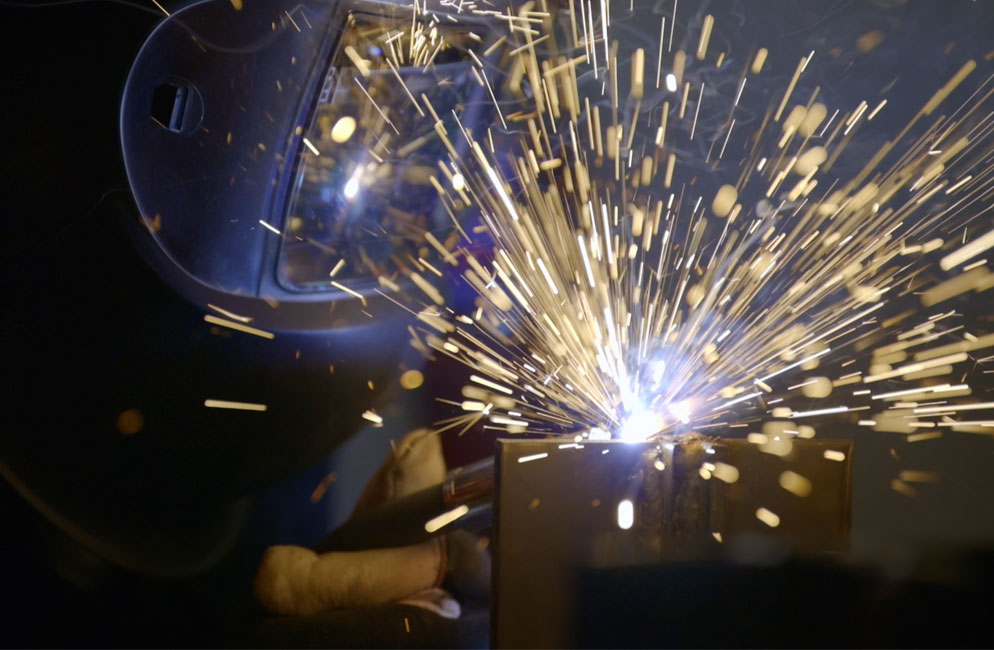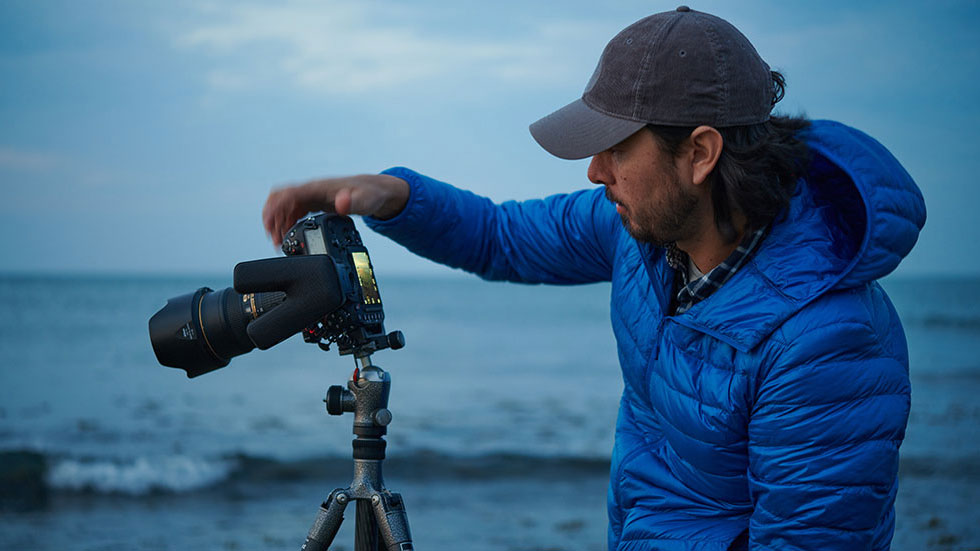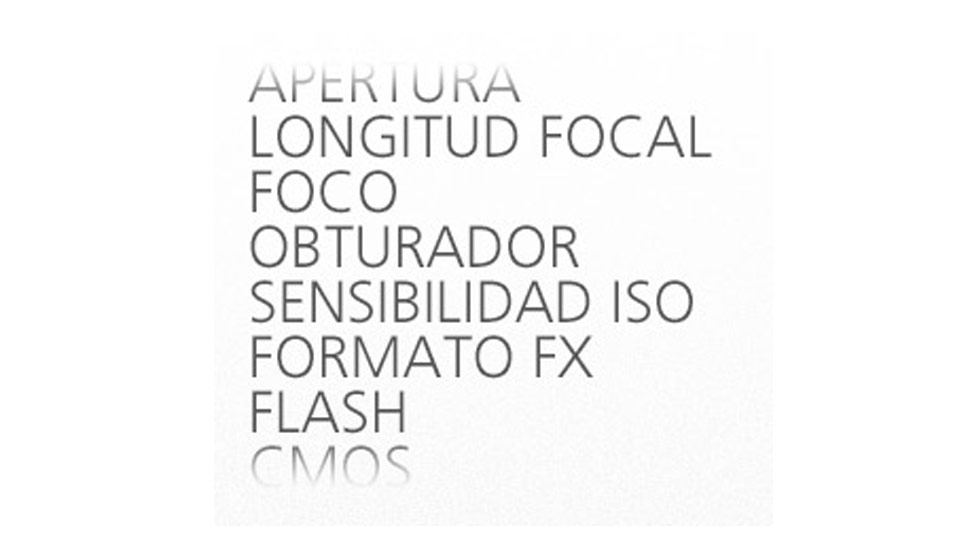Flying Sparks, Cinematic Visuals and Added Flexibility: The Documentary Appeal of the Z6III
A welding class in high school was the start of Alex Gorosh’s fascination with the skill. The Women Who Weld organization and the Z6III offered the opportunity to produce a video that would showcase the camera’s professional capabilities and the group’s good works.
If you’ve watched Alex Gorosh’s Women Who Weld and its accompanying behind-the-scenes video, you know a bit about the Z6III’s role in the documentary production. When we spoke with Alex about the camera’s professional capabilities, he filled in some of the details.
“I was really impressed by the camera’s performance,” he says. "One of the things I always check is a camera’s frame rate and getting 240 fps at 1080p and 120 fps at 4K for slow motion was wild. Those are the kind of numbers I get really excited about.”
Because of those numbers, and a host of other features, the Z6III was a perfect fit for the short documentary he’d long wanted to do on the Women Who Weld non-profit organization. As you might expect, a key aspect of that perfect fit was how cool welding looked in 240 fps slow motion. “I love the way the sparks look when they fly, and when they’re bokeh’d in the background,” Alex says. It turned out that when you combine the Z6III’s 240 fps capability and the extraordinary bokeh possible with NIKKOR Z lenses, sparks don’t just fly, they practically perform, revealing dimension and complex motion to produce cinematic sequences.
The Z lenses Alex used for the film were the NIKKOR Z 35mm f/1.8 S, the NIKKOR Z 50mm f/1.2 S and the NIKKOR Z 58mm f/0.95 S Noct. “It was the first time I used the Noct,” he says, “and it was remarkable. When you open up that much, you can practically feel the bokeh effect—it makes that big a difference.”
Here’s how some key features of the Z6III worked for Alex.
I was shocked at what was possible with a compact camera like the Z6III.
Resolution to Spare
One of the most important things Alex looks for from a camera is what he calls “flexibility later”—the ability to cover the just-in-case aspects of production. That’s where N-RAW, Nikon’s RAW video format, came in. He shot in it for several key sections of the video, and you might recall him praising its high dynamic range in the behind-the-scenes video.
“To be able to record with more resolution and more color information gives you the flexibility to fix things if you need to,” Alex says. “It’s all about setting yourself up for success in post-production. With the Z6III, being able to record in RAW, especially in 6K, means you don’t necessarily have to nail the framing. I can get somewhat close but keep it a little bit wider than I know I’ll want. When I’m in edit and I see a person has shifted, I can zoom in a bit to get the framing I want.”
"With 6K you’re able to get much more information than you could from 4K—I’d say I was shocked at what was possible with such a small camera as the Z6III. So 6K means having more possibilities and a lot more to work with in post-production, now and for the future.”
Essential Monitoring Tools
On the welding shoot, the changing light and the deep shadows made monitoring the exposure a must. “The waveform display in the viewfinder essentially tells you where your exposure is,” Alex says, “and that helps you make sure you’re not blowing out highlights or losing too much in the shadows.”
In the interviews, Eye AF was vital. “It means not having to worry about the person you’re talking with being in focus. You don’t want to lose your connection to the subject. Once the Eye AF is locked on, I’ve got the confidence to keep eye contact and concentrate on the person.”
A behind-the-scenes glimpse of the powerhouse Z6III taking on close-up and slow-motion capture of the fiery world of welding. (No cameras were harmed in the making of this video.)
Cinema Rigs
The SmallRig company, in cooperation with Nikon, has designed a custom cage for the Z6III. Alex found it really helpful for the welding shoot. “For every project, you want to build the camera a little differently,” he says, “and having a cage is a big help. There are times you want to mount the monitor at the side of the camera, or add lights, or an external mic, or rails beneath the camera, or put on a matte box, and a cage gives you attachment points all around the body.”
Full HDMI
Finally, a word about confidence and Alex’s need for a high-definition view of crucial sequences. He got both with the Z6III’s full-size HDMI port. “It was great having a standard port, rather than a mini. I connected the camera to the monitor so I could check angles no matter where the camera was.” And for this shoot, the camera was at one point in a pretty important, and pretty tricky, position. “We had it low, on a tripod, with a piece of plexiglass over the lens. We knew the sparks were going to hit the plexiglass, and to monitor that I didn’t want to crawl under the setup, under that plexiglass shield. So I was able to hold the monitor, which was connected to the camera’s HDMI port, and watch what was happening. You never know when you need to put the camera in a place where you can’t or don’t want to fit your body, and you want the best view of what’s going on.”
On Set
Alex is an award-winning filmmaker and the subject of numerous articles. He’s also a “cameras are tools” guy who has little interest in technology for its own sake. There was a job to do—creatively, competently, on time and on budget, and the Z6III delivered on the promise of its specs as an extraordinary addition to Nikon’s line of Z cameras.
Alex’s website, at www.alexgorosh.com, features examples of his commercial, non-profit and documentary filmmaking.




